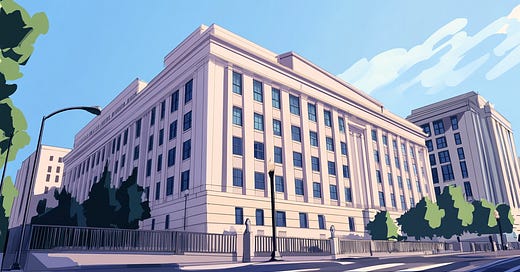The Fate of Federal Buildings
As the government's office portfolio faces dramatic cuts, what opportunities and challenges lie ahead?
The Washington news cycle is operating at an incredible clip these days, with headline-grabbing updates filtering out seemingly every hour. The efforts of DOGE, in particular, often lead the nightly news or top the local papers.
Among the deluge, the government is rapidly, and very deliberately, engaging in an effort to significantly reduce its portfolio of owned and leased real estate assets. While there’s little information about how the administration is deciding what to keep versus what to offload, DOGE appears to be at the helm of the effort, which is sure to have a significant impact on the commercial real estate markets with the largest federal footprint.
It's no surprise, then, that commercial real estate professionals in Washington, DC are pretty anxiety-ridden these days. The District, unsurprisingly and not uniquely, has been struggling since COVID to get workers to return to the office. According to CoStar, in the last five years 3.1 million square feet of office space have been vacated in DC’s central business district, the office vacancy rate has hit a 30-year high (and continues to rise), and office rents have been flat or declining. Complicating matters are the countervailing effects of return-to-office mandates for federal government workers and massive federal headcount reductions.
But where there's disruption and transformation, there's also opportunity. Among Washington, DC's real estate leaders there are plenty of optimists, especially those that see the redevelopment of federal office property as an opportunity to eliminate economic dead zones and spur downtown revitalization.
This letter will provide context for the real estate landscape in the District of Columbia, and explore the opportunities that exist to capitalize on the coming transformation of the federal office portfolio.
In particular, we'll discuss:
Recent efforts by the federal government to right-size its portfolio of real assets;
The federal real estate portfolio in Washington, DC and potential alternative uses for those buildings; and
The impact on the broader DC market and opportunities for redevelopment.






